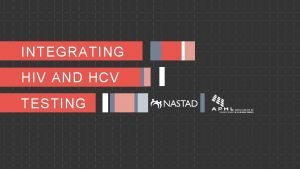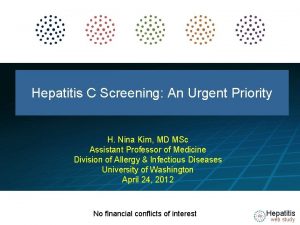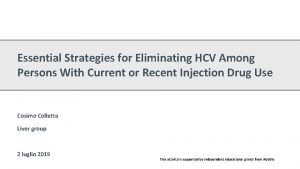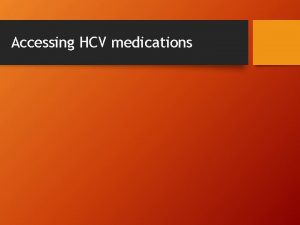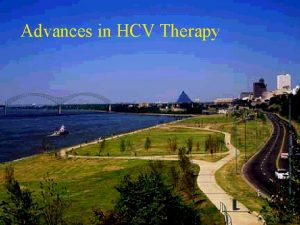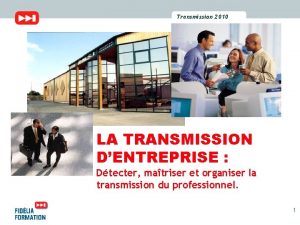Module 2 HCV transmission and risk prevention Module













- Slides: 13

Module 2: HCV transmission and risk prevention

Module 2: HCV transmission and risk prevention Module goal To provide an overview HCV transmission routes and risk prevention strategies Learning objectives By the end of the module, participants will be able to: § Explain the main ways by which HCV is transmitted § Summarise the main HCV prevention messages § List the main interventions that can prevent HCV transmission § Discuss changes in service delivery and practice that can reduce HCV transmission Topics covered § § § § HCV transmission routes and risk factors Prevention messages Key prevention interventions Simultaneous delivery of interventions Factors that hinder safer injecting Tailoring of prevention messages Risk factors and transmission prevention 1

Group work § How is HCV is transmitted? 2

HCV Transmission HCV is transmitted through blood-to-blood contact: § Sharing of injecting equipment § Tattooing or body piercing § Medical or dental procedures with unsterilised equipment § Needlestick and blood spill accidents in health care setting § Sharing of crack pipes, snorting straws § Sharing personal such as razors, toothbrushes and nail scissors § Unprotected high risk sex where there is potential exposure to blood § From mother to infant during pregnancy or during labour § Through blood transfusion 3

Group work § What are the main HCV prevention messages? 4

Video § How small is the hepatitis C virus? – an animated film 5

Video § A film on hepatitis C survival in used syringes 6

HCV prevention strategy limitations ‘It is conceivable that HCV prevention has failed not so much because the wrong strategy was pursued, but because efforts have been too small-scale and therefore weak in relation to the number of factors favouring HCV transmission’ Hagan, 2005. 7

Group work § List the main interventions known to reduce HCV transmission among PWID 8

Group work § What hinders PWID from injecting safely? 9

Video § Does cleaning syringes work? – the impact of bleach on HIV and HCV in syringes 10

Group work Practice and service delivery improvements: § Identify changes in your practice that will improve outcomes for IDU’s § What changes in service delivery that will improve outcomes for IDU’s? 11

Summary learning points § HCV is mainly transmitted through blood-to-blood contact § HCV is very small and highly infectious and only minute amounts of infected blood needed to transmit infection § The main risk for PWID arises from the sharing infected needles and syringes § Optimal coverage of NSP and comprehensive access to OST is associated with reducing HCV transmission § Lack of provision and poor access to services often hinders PWID from adopting safer practices 12
 Primary prevention secondary prevention tertiary prevention
Primary prevention secondary prevention tertiary prevention Dulong's formula
Dulong's formula Hep c symptoms female
Hep c symptoms female Douglas t dietrich
Douglas t dietrich Hcv window period
Hcv window period Hcv treatment
Hcv treatment Hcv treatment
Hcv treatment Chapter 19 disease transmission and infection prevention
Chapter 19 disease transmission and infection prevention Chapter 19 disease transmission and infection prevention
Chapter 19 disease transmission and infection prevention Chapter 19 disease transmission and infection prevention
Chapter 19 disease transmission and infection prevention Market risk credit risk operational risk
Market risk credit risk operational risk Residual risk and secondary risk pmp
Residual risk and secondary risk pmp Business vs financial risk
Business vs financial risk Relative risk and attributable risk
Relative risk and attributable risk




